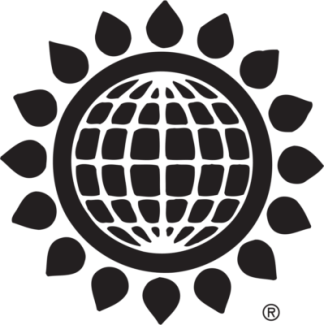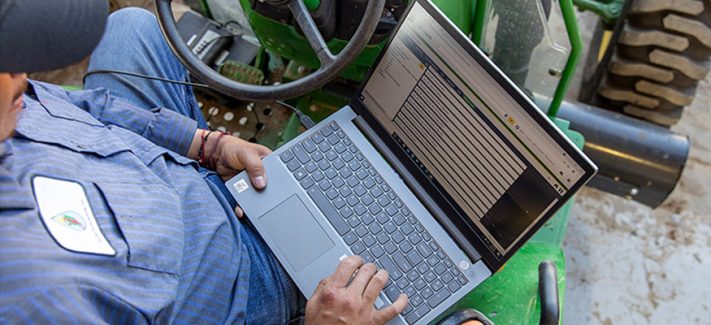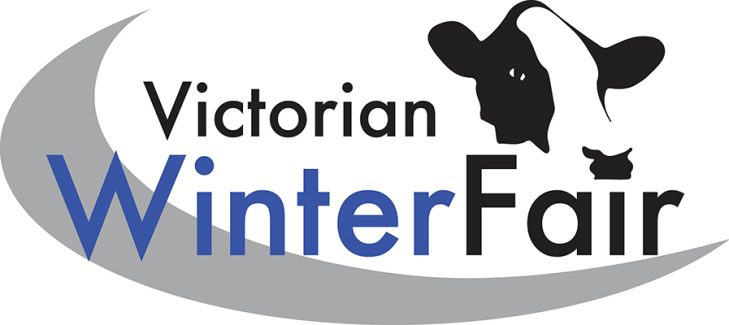Ireland has an ambitious plan to grow into a major player in the international dairy market.
The small island nation produces 6.5 billion litres of milk a year and wants to grow to 10 billion litres with an eye on markets in Asia, Europe and the United Kingdom.
The growth was spurred when the European Union removed dairy quotas two years ago.
“There was a pent up desire to expand among Irish dairy farmers,” said Padraig Brennan, director of international markets for Bord Bia, which formed 20 years ago to promote Irish food and drink at home and abroad.
 “Once the controls went in 2015, we saw Irish expansion in dairy production of about 20 percent.”
“Once the controls went in 2015, we saw Irish expansion in dairy production of about 20 percent.”
Milk is delivered mainly to farmer-owned co-operatives, and about 85 percent is exported in the form of value added products such as butter, cheese, powders and baby formula. China is a major buyer of Irish infant milk formula.
During a future of agriculture conference held at Naas outside Dublin, dairy giants Fonterra of New Zealand and Friesland Campina of the Netherlands along with the dairy co-operative Glanbia Ireland talked about the increasing demand for milk products around the world.
The Dutch and New Zealanders also provided advice for the ambitious Irish dairy industry. Glanbia is a farmer owned co-operative that handles 30 percent of the Irish milk pool, taking about 2.4 billion litres of milk annually. It is approaching $2.9 billion annually in sales. Results for the first half of 2017 reported $1.6 billion in sales, a 12 percent improvement over last year at this time.
“We have 9,000 active farmers in the shareholder base and they are there to remind us of the things we could be doing better,” said chief executive officer Jim Bergin.
The company is making big investments with plans to spend $435 million in the coming years in processing facilities and support services for farmers.
“We have been on an upward trajectory for the last number of years,” said Bergin.
Ireland is a food exporting nation, producing far more than it can consume. It has carved out 12 percent of the world dairy market but wants more, selling products such as milk powder, protein powder for energy drinks, formula, cheese and butter.
“We have to fight for every inch,” said Bergin.
At the same time, this company and other Irish firms monitor the world political and trade news daily. The United Kingdom’s decision to leave the EU has created uncertainty throughout the agriculture sector.
“It is like mercury sliding about and you hear different statements every day and contradictory statements and possibly some gamesmanship,” he said.
The bill to withdraw from the EU was passed with a majority vote in the British Parliament Sept. 12. However, companies do not know what new food safety standards may be implemented, what possible tariffs may be imposed or what currency values might do, he said.
Ireland exports about a third of its dairy production to the U.K., and as the picture shifts, new markets are needed. Understanding different cultures and food preferences could be a challenge.
“We have to diversify away from the U.K. We don’t want to do it and we have done well with them for many years,” Bergin said.
“It is a much tougher market and we have to invest significantly in those markets and ultimately the return from those markets is lower.”
Capturing profit is the key to success rather than rapid growth, said representatives from Friesland Campina and Fonterra.
“Focus on value, not on volume. By turning the value chain around from cow to consumer we are making sure our focus is on the market and consumers. It is the customers who make the difference,” said Jeroen Elfers, corporate director of co-operative affairs with the Dutch dairy co-operative, which runs on a three year strategy with plans to grow steadily.
The company is a 100 percent farmer owned co-operative with $16 billion in sales to 100 countries annually. There are 19,000 members, of which 14,000 are farmers. Most farmers are in the Netherlands and a few work in Germany and Belgium.
Volumes go up every year, and the company has been able to pay farmers more each year.
Its most recent announcement set a raw milk price of $59 based on 100 kilograms of milk with 3.47 percent protein and 4.51 percent lactose. This is up $3 from August and well above payments in 2015 and 2016. The organic price is $71 per 100 kg.
Elfers said the company serves one billion consumers daily. It focuses on nutrition and environmental sustainability in its “grass to glass” promotions featuring real Dutch farmers.
The company rewards farmers with an extra 70 cents per 100 kg of milk for turning their cows out on grass for at least 120 days for a minimum of six hours a day.
It estimates that 78 percent of its farmers have joined this initiative.
Consumer confidence in the food supply is declining quickly so the corporation is cognizant of connecting with customers to explain that milk products are nutritious and safe. It is also willing to bend.
“Consumers tend to be more and more powerful,” he said.
German consumers are pushing hard against any form of genetically modified products.
“In a year’s time it will not be possible to deliver dairy based products with GMOs,” he said.
In response, German and Dutch farmers are looking for non-GMO feed.
“In our case, the big challenge will be finding non-GMO soya,” he said.
The company strategy is to always anticipate the newest consumer demand as well as changing trade deals. New markets such as China may involve forming partnerships with companies there. Friesland was one of the first brands to obtain infant formula registration in China.
The company also has a presence in Pakistan, Africa and the Middle East. It is also active in the U.K. and believes Brexit could present major challenges because no one knows what the new trade environment might look like. In addition, the company is adjusting to new environmental demands. Cow numbers in the Netherlands may have to be re-duced to meet mandated reductions in phosphate levels in manure.
The Dutch dairy industry is also investing in sustainable programs such as installing 400,000 solar panels to barn roofs and 1,000 biodigesters to handle manure and generate energy by 2020.
Similar initiatives are found in New Zealand, said Nicola Shadbolt of Fonterra. A dairy farmer, she is also a member of the co-operative’s board of directors.
Fonterra is the world’s largest dairy processor and New Zealand’s largest company with revenue of $19.4 billion.
About 10,700 farmers are shareholders and the company focuses on powders, milk, yogurt, butter and cheese as well as ingredients such as bakery butters and creams. Because the country’s dairy production takes place on grass systems, the milk supply can be seasonal.
With New Zealand being so far from its customers, exporting fluid milk is not an option. Customer service is the focus, and the company knows there is considerable choice in dairy products.
“We have a kaleidoscope of consumers out there,” she said. “There is almost too much choice.”
Permission to indulge in fat is back, but people also want “free from” products, more protein and other attributes. New Zealand wants open borders and is eyeing India, where the market is managed. Significant growth is expected in emerging countries such as India, Mexico and those in Africa and the Middle East, so import restrictions have to come down, said Shadbolt.
The company expects 2.3 percent annual growth.
New Zealand produced 23 billion litres in 2016 and wants to grow to 25 billion litres in 2021.
“The growth in the traded market is fast growing and what that tells me is that there is room for all of us, and the opportunities are quite immense,” she said.
“We will sell our product wherever we can get the best price for it in the form that best suits our production system.”
New Zealand is a large producer, but other considerations are also on the corporate agenda, such as meeting consumer expectations about value, corporate responsibility and environmental sustain-ability.
“It is not the production level that matters, it is what you can do with it,” she said. “There is no sense in having a target of all those litres unless you know which of those customers you want to target.”
New entrants to the market need to make sure their marketing plans result in as much profitability as possible rather than growing production.
“One of the comments you used to hear in New Zealand was, ‘we’ve got to get rid of product,’ and now that has disappeared from the Fonterra vocabulary,” Shadbolt said.
“We are actually placing product where we want it to be with a specific customer or market.”
Growth will flow from an attitude like that, she said.
Corporate responsibility and environmental sustainability is critical for New Zealand’s farmers, who have invested about $880 million of their own money to fence 24,000 km of waterways, plant trees and adopt alternative fuels.
Fonterra once lost touch with its customers but has turned that attitude around. One of its initiatives is a company funded school milk program that in 2013 began distributing cartons of fresh, white, chilled milk to children in 1,450 schools.
This ultimately improved milk demand because children were drinking it from an early age.
Source: Western Producer




